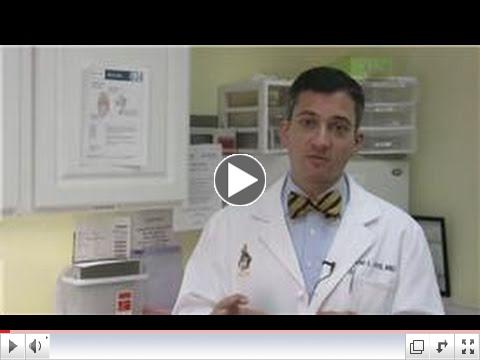|
Breast milk jaundice.
| |
"Breast milk jaundice refers to an unconjugated hyperbiilrubimenia associated with breast feeding that develops at 4-7 days of life in an otherwise healthy neonate and has no other identifiable cause." (It is different from breast feeding jaundice, which, while occurring during the same period of time, is due to insufficient production or decreased intake of breast milk).
Bilirubin conjugation is catalyzed by UGT-glucuronyltransferase (UGT1A1); defects of which cause hereditary unconjugated hyperbiilrubimenia (Crigler-Najjar syndromes types I and II and Gilbert syndrome). Multiple gene mutations in the coding region for UGT1A1 are the underlying cause.
It appears that the majority (52%) of Japanese infants with breast milk jaundice are homozygous for gene allelic variations of UGT1A1*6. The cause/s of breast milk jaundice in other ethnic groups and those 48% of infants who do not have the gene mutations remains unexplained (of interest, 5β-pregnane-3α,20β-diol inhibits UGT1A1 activity.) Journal of Pediatrics Journal of Pediatrics |
|
A school based intervention to enhance children's health.
| |
The "Active for Life Year 5" (AFLY5) is a randomized control trial study of school-based 8-11 year old children at primary schools in Bristol, England where children are assessed for:
1. Daily amounts of physical activity.
2. Time in sedentary behavior.
3. Portions of fruits and vegetables consumed per day.
4. BMI/waist circumference and whether overweight or obese.
Measurements are taken at a base-line period, and then immediately following an "intervention" (teacher training; ten parent-child interventions, homework activities and education) and 12 months later.
The AFLY5 school-based program does NOT improve levels of physical activity, decrease sedentary behavior or enhance fruit and vegetable consumption in school aged children.
BMJ
|
|
|
Download, print and pin this information on your office wall.
-This is a "Must Have" (Ed.)
|
Underwriting Opportunities
|
With a circulation of over 5,000, Updates in Pediatrics offers an excellent opportunity to promote your brand at affordable rates.
|
|
The therapeutic role of Anakinra, an Interleukin-1 receptor antagonist in systemic inflammation in children.
Interleukins (IL) (synthesized by leukocytes, helper CD 4 T Lymphocytes plus other cells) are a family of proteins and signaling molecules (chemical messengers) produced in response to an inflammatory stimulus and who mediate the bodies' immune responses, inflammation and hematopoiesis.
Anakinra (Kineret �) is an Interleukin-1 (IL-1) receptor blocker prepared from genetically modified E. Coli which may be used to decrease systemic inflammation e.g. sepsis.
A review of 8 critically ill children with secondary Hemophagocytic lymphohistiocytosis (HLH-an uncontrolled hyperinflammatory disease caused by activated lymphocytes etc.) with respiratory failure requiring mechanical ventilation, and cardiovascular support noted, following Anakinra treatment, substantial decreases in many inflammatory markers (CRP; ferritin; fibrinogen).
Anakinra ( an IL-1 blocker ) may be a promising new approach to the management of a number of disease processes involving a significant hyperimmune inflammatory response. (A retrospective study of the effects of Anakinra for steroid dependent, colchicine-resistant recurrent pericarditis, indicates its value as a monotherapy in this situation.)
Pediatric Critical Care Medicine
Journal of Pediatrics
|
Video Feature
 | | Pediatrics & Child Health Care : Signs of Jaundice in Newborn |
via YouTube
|
The influence of pre-brushing mouthwashes on plaque removal in children.

A double-blind, randomized, control cross-over 25 day experiment utilized 38, 12-14 year old children who had their plaque index measured before and after using a pre-brushing mouth wash (4 different solutions) was undertaken to assess the benefit of this approach on plaque formation.
Pre-brushing mouth washes by children do not enhance plaque removal by tooth brushing.
Pediatric Dentistry
|
Benefits of attending a Summer Camp for children with Inflammatory Bowl Disease (IBD).
Children with IBD frequently struggle to live with a chronic condition.
It appears form a study of children who either attended (or not) Camp Gut Buster, an IBD-disease specific summer camp, that exposure to peers with a similar disease enhances knowledge, gives a new perspective to their problem, and enhances the psychosocial support that such camps offer in adjusting to living with this chronic condition.
Journal of Pediatric Gastroenterology & Nutrition
|
Respiratory outcomes of children with BPD & gastrostomy tubes/Nissen fundoplication during the first 2 years of life.
Infants with bronchopulmonary dysplasia (BPD) frequently (but not always) undergo gastrostomy tube (GT) placement and/or Nissen fundoplication (Nissen GT) usually within the first 6 months of life, to improve weight and decrease respiratory symptoms related to feeding difficulties.
Infants with BPD who DON'T have a GT and/or Nissen GT placed wean off oxygen earlier, and have less re-hospitalizations (though have similar respiratory symptoms).
Pediatric Pulmonology
|
|
Updates in Pediatrics is brought to you by:
| |
|
|
|